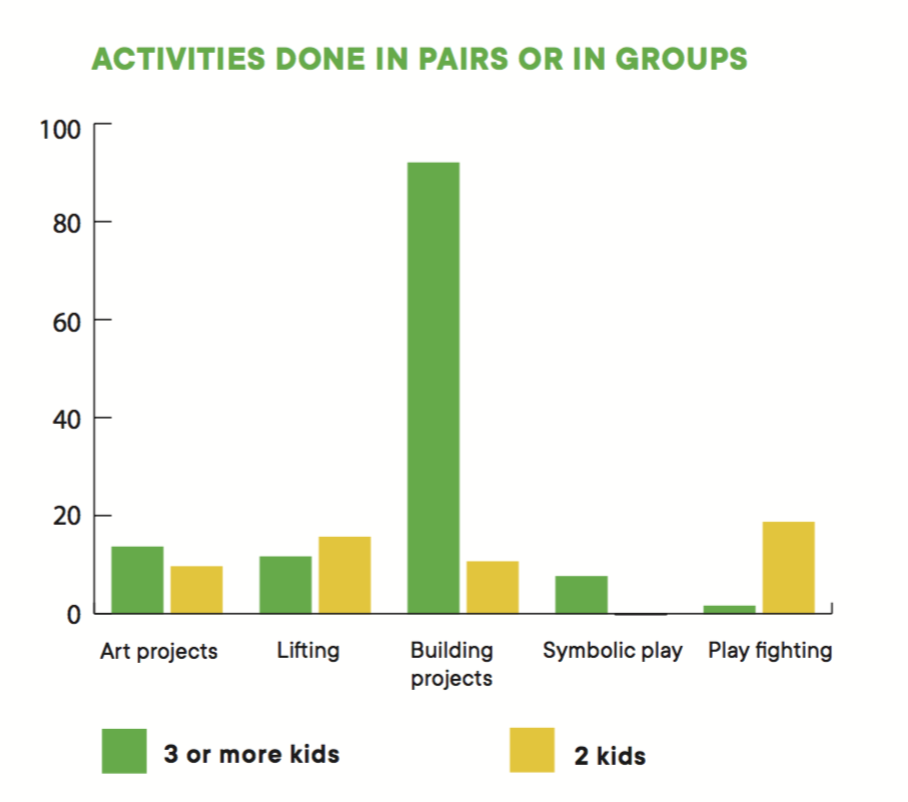Results of the Adventure Lab Study
The idea for the Adventure Lab came out of the joint initiative between Jambette and community organization Patro de Lévis. The goal for the project was to provide kids in Lévis with a free play area where they could get back to the basics of playing, be spontaneous, and let their imaginations run wild under minimal supervision.
To measure the success of the project, Jambette asked Université du Québec à Trois-Rivières and Université du Québec à Rimouski - Lévis campus to study the behaviour of children engaging in free play. The results will help us develop new products that better meet the needs of children.
The study revealed that the most popular activities are art projects, lifting (lifting their own body up), building projects, symbolic play, and play fighting.

Building projects were notably more frequent and lasted much longer than any other type of activity. For example, we built a very rudimentary structure that resembled a garden shed. The kids then took it over and used it to build a variety of things. For example, we observed one child who spent over 20 minutes manipulating a tarp to build a shelter and encouraging his friends to help him. This got the kids to start working together. We also noticed that the activities were usually done in groups of three (3) or more, except of course when the kids were lifting their own body up.

Another interesting observation was that children were attracted to trying to keep their balance, an appealing activity with moderate risk. The kids were also inventive in finding good places to climb. Heavy objects were an incentive to play together and cooperate.
We are currently in the brainstorming phase of creating a product based on the results of the Adventure Lab project and the study. We will launch the project at a later date. We are also working with Patro de Lévis to prepare a second iteration of the Adventure Lab. We’re toying with a number of ideas, including introducing tools such as hammers and saws, having a permanent facilitator on site, and creating some sort of “project” that the kids could set up.
Long live the Adventure Lab!
Click here to download the research report summary.
